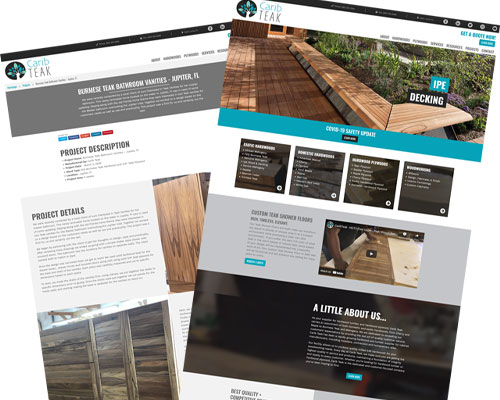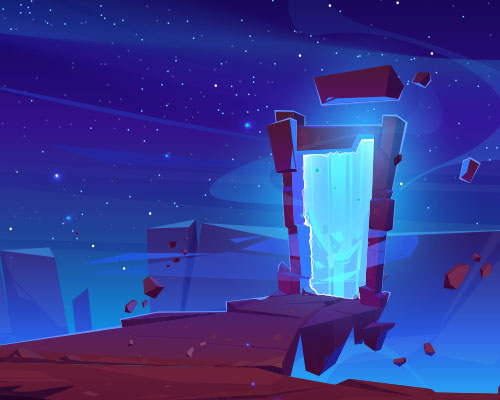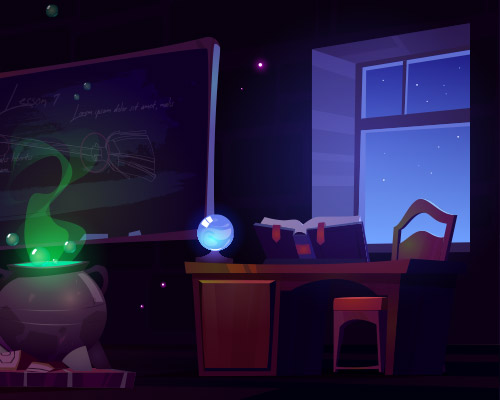Building A Website?
What To Know & How To Be Prepared
Time and again, we have seen agencies and freelancers alike deal with a very common problem in our industry, a client is seeking to build a new website, has determined what’s best for their needs, found a website development team to bring their vision to life, and are now ready to move on to the next thing while the website they’ve always wanted is built, but, in the end, pieces are missing, last minute changes are being requested, people are frustrated, and timelines get pushed. In truth, an easy and smooth process to having your website built is always the goal; however, more often than not the process does not go to plan. The culprit of this issue seems to usually stem from the freelancer or agency not adequately informing the client on how to be prepared for what will be needed from them throughout the development process. It is often overlooked, but the truth is that even the world’s best website development teams will fail at creating a site that achieves all of your objectives and goals without your help. After all, your website is being meticulously designed to serve as a tool that promotes the products or services you are offering and represent who you are and what you want the world to know about you and your business. The takeaway is this, developing a new website is not only a financial commitment, but one that requires your attention and time as well.
That said, coming to the table with only a handful of items will put you leagues ahead of the rest! To help you be prepared, we have put together a high-level short-list of what we consider to be the most important elements to know and have ready to go when you’ve decided it’s time for you to move forward with building a new site:
-
Brand Specific Colors or Theme
One of the first and most important elements your development team will need from you is whether you have a particular theme or established brand colors you want used. Brand specific colors are usually determined during the process of creating logos and marketing materials, so any documents you can provide with specific color details, such as pantone or hex numbers, is extremely helpful. If you don’t have an established color palette, do you know what colors you would like to use?
-
Logo(s)
Almost always included in the header of a website, collecting the logo(s) is also a critical step in the process. What is often not thought of until the last minute, is do you have access to your logo files, and, if so, what formats are they in? Some formats provide a high-quality image that can be manipulated and edited as needed, while others have limited options and functionality. Desirable formats are .svg and .png files, so if you do not have access to these options you will want to reach out to whoever developed your logo(s) to request they provide you these formats to have on hand.
-
Images (Assets)
If you are looking to have a website that features images of you, your team, your products or services, your development team will need access to those files. So, have you put together a collection of what you would like used? Further, do you know the quality of your images? Depending on where a photo is being utilized on the website, a higher quality image may be needed. The most common location where a high resolution image is needed would be in the header, “top” (also known as the “hero”), of each page. As a rule of thumb, the image being utilized in the header should have a minimum 2000 pixel resolution; however, it is important to note that not all images will need to meet those same standards to be used in other places on the website.
-
Text (Copy)
Depending on the details of your agreement with your development team, you may or may not be planning on providing them the text (also known as the “copy”) to be included on each page of your website. If you choose to write the text yourself, we recommend that you set aside a significant amount of time in your schedule in order to prepare the necessary content. Out of every step involved in the development process, we would say that this area is most often responsible for project delays and setbacks.
-
Account Credentials
A simple but commonly unthought of aspect, your development team will most likely need some of your account credentials in order to build and launch your new website. These details are most often needed to gain access to your website domain name system (DNS) or add your Instagram feed to a page on your site, but, depending on the features you are incorporating, credentials may be needed for other items as well. Having a credentials list put together in advance will definitely help the development process continue to proceed smoothly.
-
Last Minute Changes
Throughout the development process, it is important to understand how and why each stage is laid out the way it is and in what way items like last minute design changes can affect your project. Any good development team’s goal is to always exceed a client’s expectations, but setbacks can occur when significant changes are requested late in the process, after client approvals have already been received, and the project has moved on to the next steps. This is not to say that once passed everything is set in stone, but when a significant last minute change is requested it’s important to keep in mind that that could affect your project’s timeline. However, there are a number of small changes that can be made late in the process, like text or image changes suggested in review, and don’t forget that changes can also be made after the website is completed and launched as well.
-
Communication & Feedback
As a final note, communication is key, and understanding where and when your feedback is needed can make all the difference. Throughout the process, you may be asked for a comment or suggestion, and at certain benchmarks you may be asked to review “completed” elements. There are always things that get in the way of our attention, especially when you have a business to run, but keep in mind that agencies and freelancers are also working off of a schedule with other clients and if feedback is delayed it could affect the timeline of your project. Keeping an open dialogue with your development team and making sure you plan to invest the time when and where it is needed will drastically help to reduce any interruptions or stress.
That all said, this list may not cover everything, but, without question, having these items prepared will have you ready for success, not to mention put you on the fast track to be any freelancer or agency’s favorite client!
Kindred Articles
Sound advice from the Warlock counsel.
Carib Teak Website
A strategic upgrade that produced major results.
We helped this business thrive by designing a website that focused on a higher-end audience of interior designers, luxury homeowners, and builders.
Continued Marketing
Why it’s important
Don’t treat the symptoms, fix the problem! Many companies view marketing as a service to utilize once something is going wrong (i.e. not enough customers or recognition). Continued marketing is your company's sustenance and helps you get where you want...
Why Every Author Needs A Website
Social Media Alone Isn't Enough
Without question, for many years now, anyone doing anything needs a website (full stop). And regardless of your best efforts in utilizing social media, which does serve as a pivotal role in boosting awareness and assisting to promote you in...


